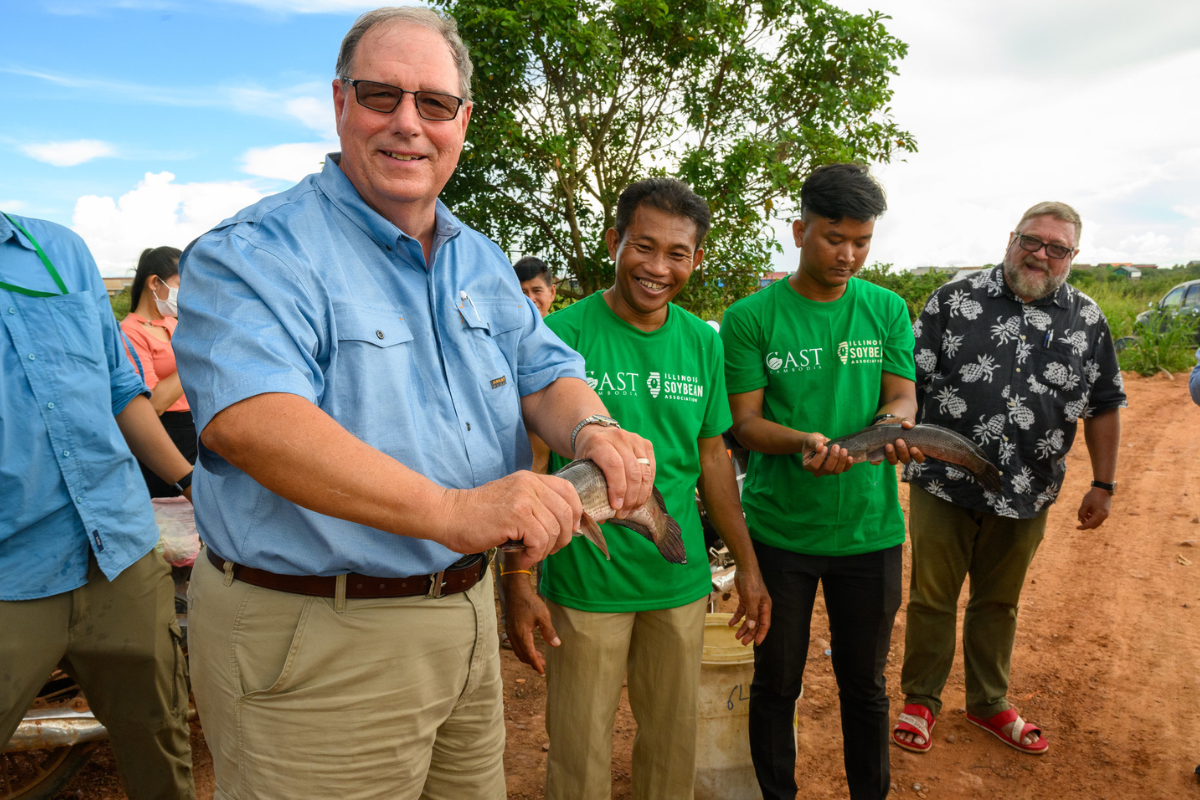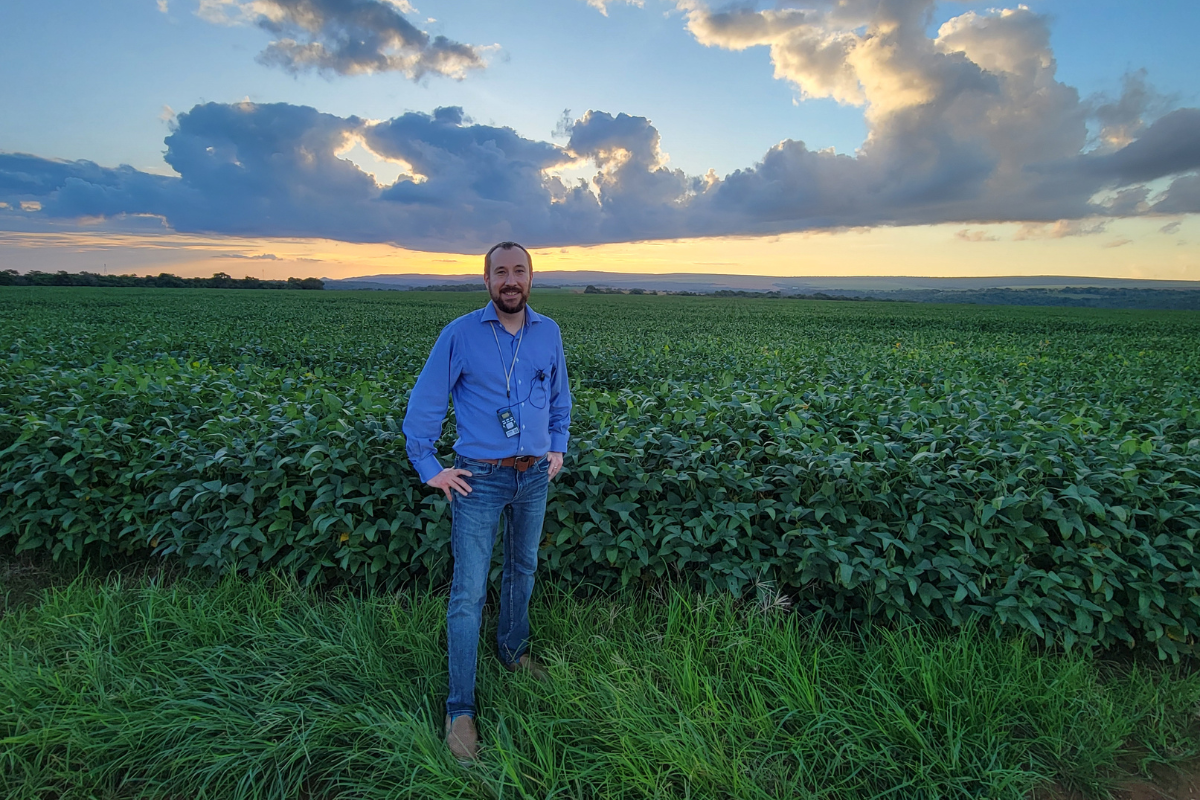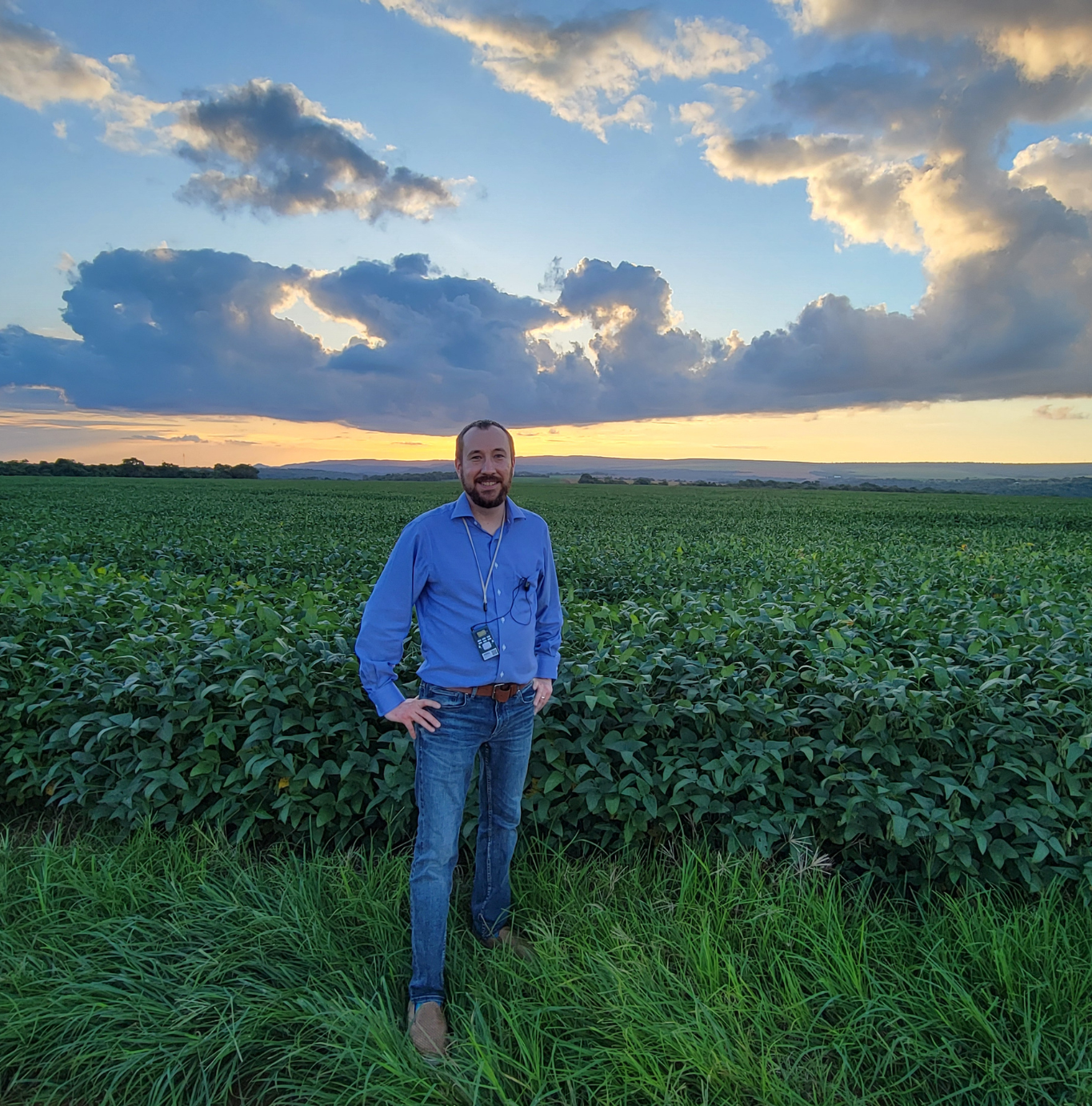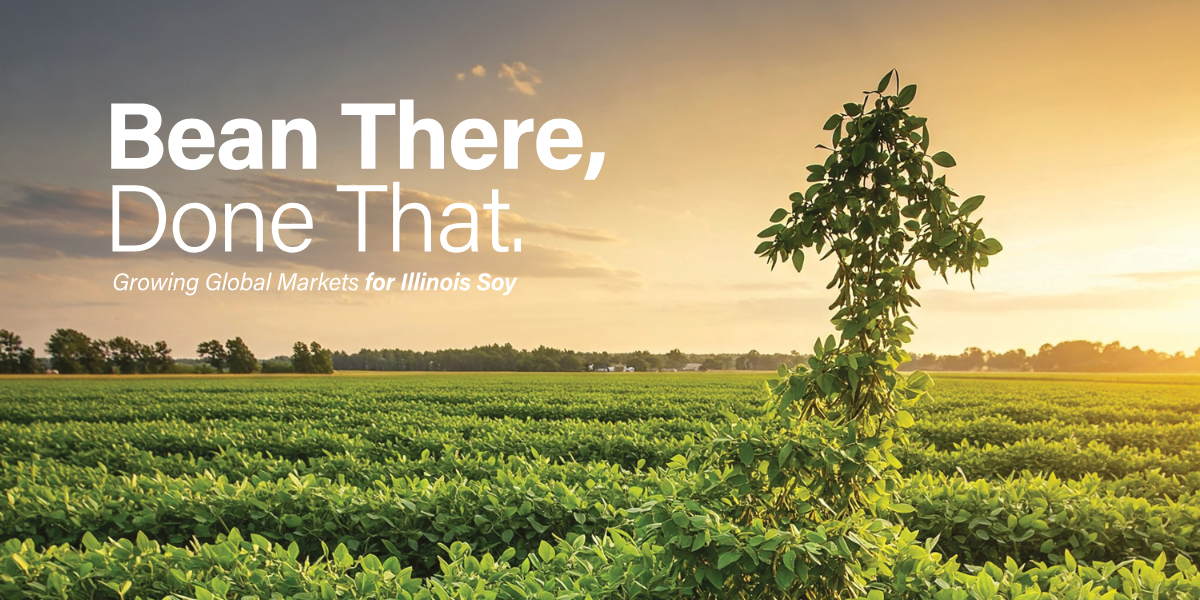As soybean markets shift globally, Illinois farmers find themselves in a strategic bind: Countries once dependent on U.S. soy are investing in their own domestic production.
In diverse locations, including China and Kazakhstan, national policies and evolving market dynamics are reshaping how and where soybeans are grown. For Illinois farmers who rely heavily on exports, these trends pose a critical challenge—and a call to action.
Recent shifts in trade policy and global production underscore the fragility of the export-driven U.S. soy economy.
“The U.S. still faces an extra 20 percentage-point tariff disadvantage in China that was imposed this year,” says Dr. Scott Gerlt, Chief Economist for the American Soybean Association (ASA).” We already saw China shift their primary focus to South American production after the last trade war. The current trade war rewards that shift while also encouraging other countries to follow suit. While there are reasons that foreign buyers will continue to come to the U.S., there is a real risk that other countries seek to diversify their food supplies away from us.”
Although some nations are working to boost their own soybean output, results have been mixed.
“Recently, the Kazakhstan government wanted to increase their soybean production to meet the growing demand in the livestock industry,” says Alan Poock, Asia Director for ASA’s World Initiative for Soy in Human Health (WISHH). The initiative seeks to grow soy demand in 28 emerging markets including five in Asia. “Kazakh farmers discovered that soybeans were not as profitable as other crops they have more experience in growing. No matter how successful these local production programs are, U.S. soy is higher quality and will have a year-round, reliable supply available.”
That observation mirrors what Todd Main, Director of Market Development at Illinois Soybean Association (ISA), is seeing across the globe.
“Our overall growth strategy is focused on developing markets in emerging economies where food security is a driving concern,” Main explains. “Yes, some countries will seek to develop domestic soybean supplies, but we have found that many countries are better equipped to grow other products and can find a competitive advantage there.”
Production Shifts Amid Changes in Policy, Protein Demand
Illinois is especially exposed to global production shifts because 60% of its soy crop ships to international markets. Any disruption abroad can reverberate quickly through local price structures and basis.
“The market needs certainty to operate,” explains Eric Woodie, Trade Analyst, ISA. But federal activity such as the Office of the U.S. Trade Representative’s Section 301 investigation “into Chinese shipping dominance, and the subsequent remedies, do add stress, and subsequently cost, to the system.”
To address domestic food security, countries are expanding livestock and aquaculture sectors, which is prompting governments to promote local soy production.
“There are multiple reasons a country may grow soy,” Poock explains. “Some governments and farmers view soy as a high-value crop that can develop rural economies and diversify crop rotation. Feed and human food companies may also view local procurement of raw materials as a corporate social responsibility.”
Strong Potential Remains for Illinois Soy
Yet despite concentrated government efforts to grow soy at home, local production efforts are unlikely to meet growing demand. Although China produced 20.65 million metric tons of soybeans in 2024/25, the country still imported 103 million metric tons and remains the world’s largest buyer.
“They remain the world’s largest soybean importer, representing 60% of global demand,” Woodie says. “Increases in domestic production cannot keep pace with the vastness of their demand.”
In his view, the greatest competitive threat for Illinois soybean farmers to monitor is South America, which has aggressively ramped up domestic production for years. That region also has the potential to woo buyers such as China when trade uncertainty with the U.S. looms.
“A strong, predictable U.S. trade policy environment is key to ensuring the world does not over-produce for current demand,” Woodie says.
Beyond China, markets such as Southeast Asia remain a growth opportunity for Illinois exports. This trend is particularly evident in countries such as Cambodia, where soymeal demand is on the rise to supply its booming aquaculture industry.
“According to the United Nations Food and Agriculture Organization, aquaculture production in Cambodia increased from 14,430 metric tons in 2000 to 348,350 metric tons in 2021,” Poock explains. “Their 16.37% annual growth was higher than subregional, regional and world averages. Cambodia’s growth rate was the second highest among 11 aquaculture countries in southeastern Asia.”

Despite trade challenges and increased soy production abroad, Illinois soy remains well-positioned for growth in countries such as Cambodia, whose aquaculture industry is exploding. That’s evident on trade visits by Illinois soybean farmers such as Daryl Cates (left), also an ASA Director. Here, he holds a snakehead fish. Photo Credit: Joe Murphy, United Soybean Board
How to Stay Competitive as Landscape Shifts
For Illinois farmers, the key to navigating headwinds such as accelerated soy production abroad lies in strategy, adaptability and partnership.
“Farmers should focus on the things they can control. Are crop insurance options being maximized? What about Farm Bill programs?” Gerlt advises. “Producers should also carefully consider costs to access farm ground. Large outlays for land may not make sense with today’s margins. Collectively, farmers do have options to help shape markets through the soy organizations. I’d encourage farmers to engage on these efforts.”
Poock agrees and points to the long-term trade development work supported by ISA and WISHH. “It takes lots of time to develop new markets by building trusted relationships and developing the local capacity,” he acknowledges. “Initial sales could be years away. Taking a long-term approach is helpful, and asking how this takes place will be helpful.”
Beyond these foundational principles, experts say Illinois farmers can take several proactive measures.
First, engage in trade policy conversations. “Currently, U.S. trade policy is shifting. That means there are countless opportunities for Illinois farmers to have their voices heard,” Woodie says. “I think it is critical for farmers to educate themselves on U.S. trade policies and those of our largest export markets and make sure their interests are being represented.”
Second, support WISHH and ISA’s global outreach initiatives. They’re an investment in the future. “WISHH takes a long-term market development approach that targets the full value chain in markets with high opportunity to become long-term trade partners for U.S. soy,” Poock explains.
Another important initiative is the Soy Excellence Centers, which “transfer technologies, training and best practices that support utilization of U.S. soy,” Main adds. “In 2025, we are on track to train over 20,000 career professionals in markets across the world.”
Meanwhile, the newly announced Soy Innovation Center will continue breaking down barriers to soy use in commercial applications, Main says. This will meet demand for products made from renewable materials that can be substituted for petroleum or chemical compounds of concern.
Third, farmers should keep a close watch on basis levels and transportation costs, particularly as global policies evolve. “Tariffs by other countries on U.S. soy reduce the price received by farmers. Futures prices will reflect the decreased overall demand,” Gerlt says. “But farmers that send their crop to the Mississippi for export markets will be further hurt by weakened basis.”
Fourth, market diversification is another tool for resilience. “Long-term demand growth will be needed as South America keeps expanding production,” Gerlt notes. “Research and development to identify and open new markets will be critical for growers.”
Finally, Woodie recommends doubling down on sustainability and traceability. “Illinois is a global leader in producing a high-quality, sustainable, efficient product, and the world recognizes that,” he says. Certified, traceable soy gives Illinois farmers an edge in meeting buyer expectations and gaining access to premium markets.
In the face of growing global competition and trade uncertainties, Illinois soybean farmers stand at a crossroads. The choices they make now—to advocate, adapt and lead—will determine how successfully they navigate a changing landscape and seize tomorrow’s opportunities.

A combination of global soy market-building and domestic consumption increases can help secure continued purchases of Illinois soybeans, says Dr. Scott Gerlt, Chief Economist, American Soybean Association, pictured here in Brazil. “Market development tends to take many years,” Gerlt says. “We have been pointing out to policymakers that domestic demand can be increased quickly by setting higher blending levels for biofuels. These effects are fairly quick and can help create longterm demand.”
Recent Articles
This exclusive issue of Illinois Field & Bean Magazine covers checkoff-funded research projects and their findings, as told by the research leads themselves.
By
Meet Bean There, ISA's International Market Development blog that covers events, conferences, trade missions and farm visits to connect Illinois soy with industry representatives, key trade partners, global buyers and more.
By Emma Peters, ISA International Markets Coordinator

